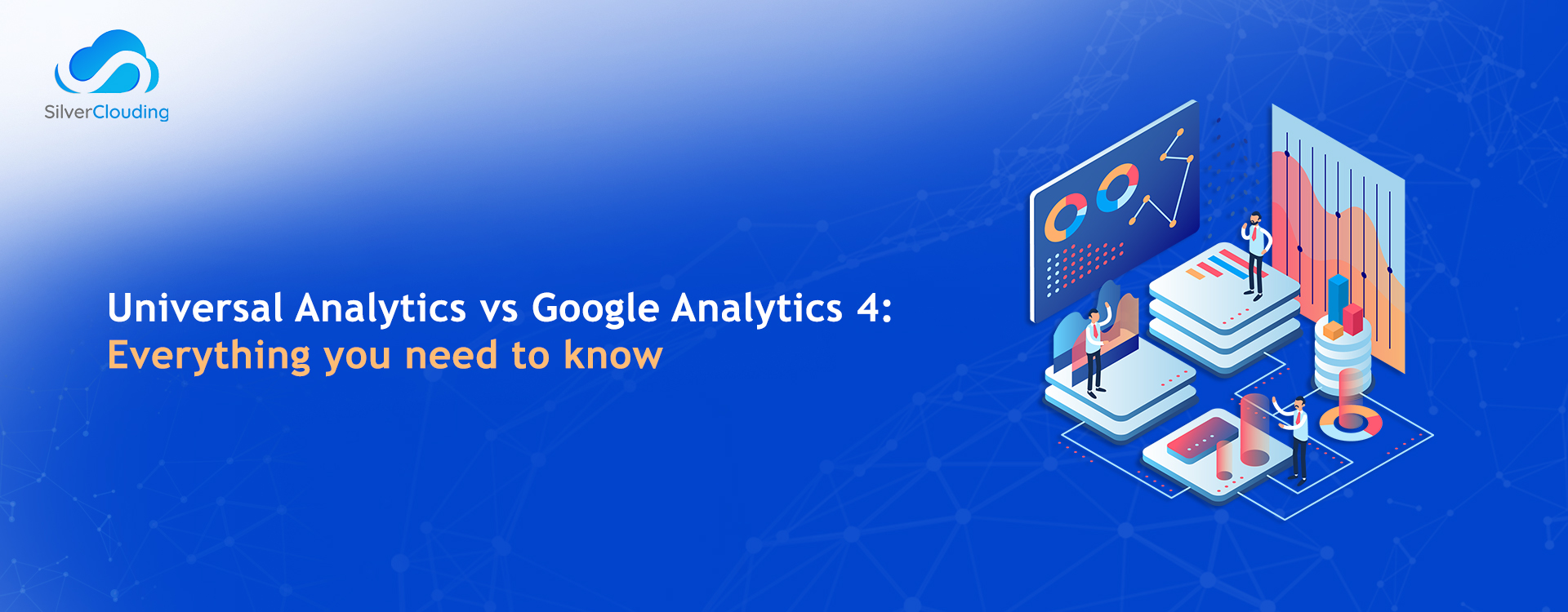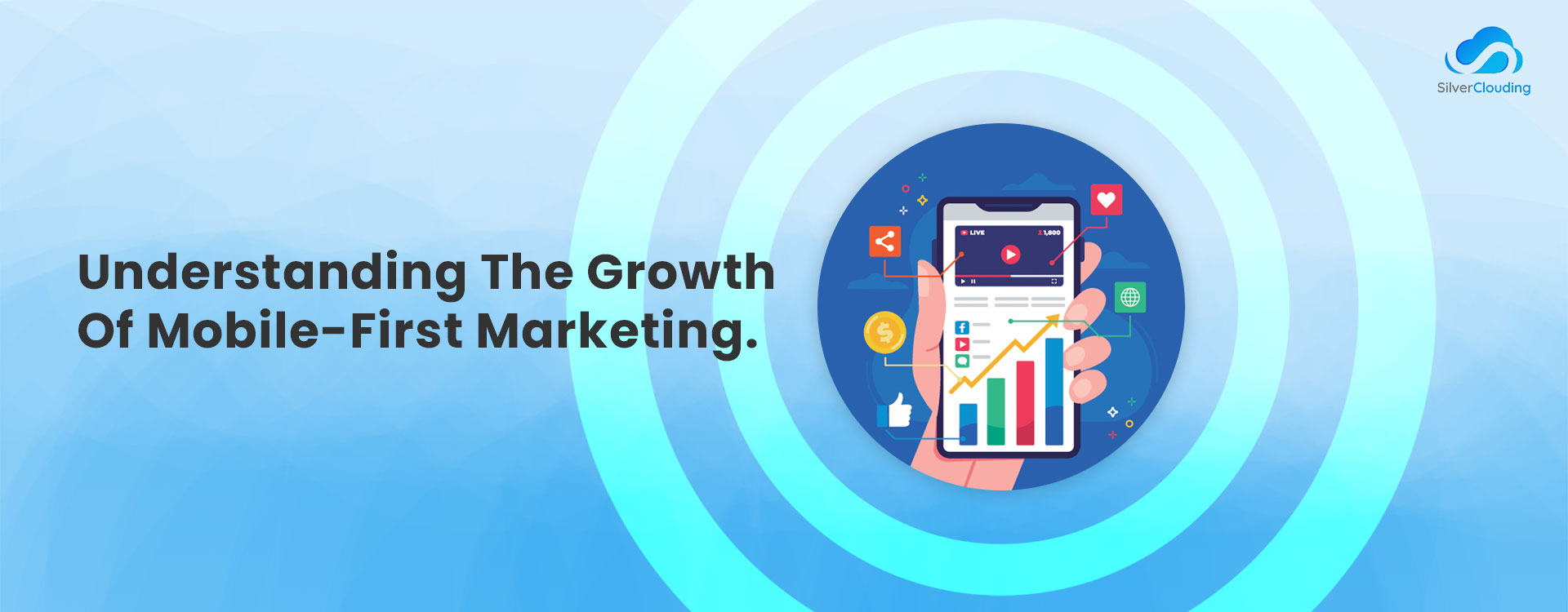The year is 2023, and the field of digital analytics is undergoing significant transformation. Beginning on July 1, 2023, users of Google Analytics will only have the option of using Google Analytics 4 (GA4), which will replace Universal Analytics (UA or GA3). The imminent deprecation of UA is causing some of us to be happy and some of us to be sad, but it will significantly impact everyone. In this blog, we’ll take a deep dive into UA vs GA4 and explore everything you need to know about these two versions of Google Analytics.
What is Universal Analytics?
Universal Analytics established a new benchmark for user data collection and management, a variation of Google Analytics.
What does Google Universal Analytics do?
Using your Analytics data extends attribution credit beyond simply the most recent click and aids in understanding the overall impact of your marketing efforts on conversion rates. For campaign optimization, you can export that analysis to Google Ads and the media tools of the Google Marketing Platform.
What is Google Analytics used for?
Google Analytics is a tool that gathers information from your websites and applications to generate reports that indicate the performance of your organization.
Google Analytics is a powerful tool that gathers data from your websites and apps to provide detailed reports on your company’s performance.
One of the major differences between Google Analytics and Universal Analytics is the way they calculate the Users metrics. GA4 emphasizes Active Users, while Universal Analytics focuses on Total Users in most reports.
Google Analytics provides several types of goals that you can use to track and measure the success of your website or app. These include:
- URL Destination Goals – This is one of the most popular types of goals in Google Analytics. URL Destination goals track specific URLs and are triggered when a user visits the specified URL(s). For example, you can set a goal for your website’s thank-you page after a transaction is completed. This goal can help you track how many people have completed a purchase on your website.
- Visit Duration Goals – Visit Duration goals are used to track the amount of time visitors spend on your website. You can set a goal for visitors to stay on your website for a specific duration, such as 3 minutes. This goal can help you measure user engagement and the effectiveness of your website’s content.
- Pages/Visit Goals – Pages/Visit goals track how many pages visitors browse on your website before leaving. This type of goal is useful for websites that offer customer support or want to keep their users engaged by encouraging them to browse through multiple pages.
- Events – Event tracking in Google Analytics is more complex than the other goal types. You need to set up events using JavaScript code to monitor specific user interactions, such as button clicks, video plays, or downloads. Once events are set up, you can select them as goals and track user interactions to measure the effectiveness of your website or app.
Setting goals in Google Analytics is essential for tracking and measuring the success of your website or app. By using the right types of goals, you can gain valuable insights into user behaviour, engagement, and conversion rates.
What are the critical differences between UA and GA4?
We compiled a list of the main distinctions to inform you about the most recent features in GA4. Continue reading below!
Measurement model
Are you aware of the sessions and page views used in GA3’s measurement model? This is one of the most significant changes in GA4, focusing on events.
Every action a user takes will be categorized as an “event.” As a result, the measuring procedure is more streamlined, with more information on how consumers interact with your website.
Tracking IDs
A measurement ID is used to configure tracking in GA4. UA uses the tracking ID in contrast. The tracking ID will begin with G in GA4 and UA in GA3, respectively.
Views
Having at least three distinct views for each Google Analytics attribute is an essential GA3 best practice. Users can design views that separate and give the information they need by using various filters.
Properties in GA4 can combine data from various data streams to produce a single set of reports. As a result, users won’t be able to use the present filters in GA4.
Event tracking labelling & setup
Users must adhere to the category-action-label-value schema while using GA3. Event tracking setup options in GA4 are giving the game additional versatility. More data is uploaded to the event setup via parameters.
GA4 records events from the categories of automatically gathered, enhancement measurement, suggested, and custom events. With GA4, the setup is mainly automatic, reducing your reliance on the development team and simplifying your experience.
Data retention
Universal Analytics is like an elephant—it never forgets. Data retention in GA3 never expires! A maximum of 14 months will be allowed for data retention with GA4. Therefore, you must use a third-party tool if you want to keep data for a more extended period.
E-commerce tracking
While GA3 provides extensive tracking and metrics features, GA4 has more limited tracking. GA4’s use of metrics and CRM connectivity produces less visibility and CRM choices. However, GA4 is still in the early stages of developing its e-commerce tracking features.
Custom dimensions & metrics
Users of GA3 have access to custom dimensions and metrics for enhancing the data they have acquired. Event parameters are utilized in GA4 instead.
The scope of your custom dimension can be adjusted to “Hit,” “Session,” “User,” or “Product” when configuring custom dimensions in GA3. In GA4, only the ‘Event’ or ‘User’ scopes allow for the creation of custom dimensions. The event parameters and user properties record the custom dimensions.
You can select “Hit” or “Product” as the scope of your custom measure in GA3. The custom metric’s ‘Event’ scope is only available with GA4.
Debugging
A third-party Google Tag Manager (GTM) Debugging Tool is necessary for GA3. Thankfully, GA4 has put all of it behind us. Because GA4 has built-in debugging capabilities, you can rely less on external platforms like GTM.
BigQuery
The days of paying for BigQuery in GA3 are over. You will receive a free connection to BigQuery when you purchase GA4, allowing you to access your raw GA4 data and perform SQL queries. BigQuery enables thorough, layered data analysis to comprehend your users better. You will therefore be able to retain data cost-effectively with GA4.
Website tracking implementation
The differences between UA and GA4 regarding website tracking implementation are minimal. A GA code is applied in UA. In GA4, a Gtag code is employed.
What are the advantages of Google Analytics4 over UA?
• Increasing User Privacy
GA4’s emphasis on user privacy is among its most notable benefits. Businesses are now forced to treat user privacy seriously due to adopting privacy legislation like the GDPR and CCPA.
With the improved privacy settings in GA4, you may better safeguard user data by setting data retention times, defining the methods used to gather data, and choosing not to collect data from specific users.
• Improved Device-to-Device Tracking
The accuracy of user tracking across devices has improved with GA4. This is because GA4 uses machine learning to monitor users across various platforms and devices by identifying trends in user behaviour.
The ability to fully see how users engage with your brand across all touchpoints makes this capability especially helpful for companies that operate across several channels.
• More accurate event tracking
GA4 features improved event tracking capabilities that let you track and analyze more events than GA3’s restricted event tracking could. You can monitor file downloads, video engagement, and page scrolling with GA4.
This gives you a better insight into visitor behaviour and enables you to optimize your website with more excellent knowledge.
• Better Reporting
GA4 has enhanced reporting features that give more specific and precise data access. It provides a more unified reporting method that lets you view all your data in one location.
Additionally, you can design unique dashboards and reports that give you the information you need to make wise decisions.
• Emphasize the customer lifecycle
GA4 gives the customer lifecycle more of a focus. It gives you more details about how customers interact with your business from the beginning to the conversion point.
Optimizing your website and marketing initiatives enables you better to engage visitors at every stage of the customer journey.
• Compatibility with Google Ads
Because GA4 and Google Ads are integrated, you can more efficiently track your Google Ads campaigns. You can check your ad performance data in GA4, which gives you information about how your ads are doing and how they impact the number of visitors to your website.
GA4 is a significant update to the GA platform that offers several new features and capabilities. The above improvements make GA4 a more powerful tool for understanding user behaviour and optimizing your website and marketing campaigns.
Therefore, the processing of new hits will halt for all standard Universal Analytics or GA3 properties on July 1, 2023, and 360 Universal Analytics properties on July 1, 2024. After then, you’ll have at least six months to view the already processed data in Universal Analytics. If you haven’t already, it’s time to start exploring GA4 and taking advantage of its advanced capabilities. Therefore, before Universal Analytics stops processing new hits, switch as soon as possible to Google Analytics 4 to gather the necessary historical data.




